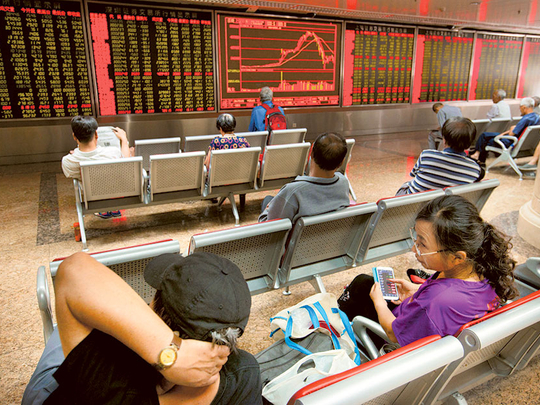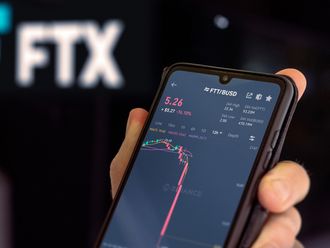
Beijing: Chinese stock analysts find it difficult to identify a single clear reason for this week’s sudden plunge in domestic share markets, but sometimes the simplest explanation is the best.
Look no further than the money market.
Since March, the benchmark CSI300 equity index has developed a near perfect inverse relationship with short-term money market rates, a Reuters analysis of market data shows.
When rates fall, share prices rise and vice versa, suggesting stock markets are dependent almost entirely on fundamental liquidity conditions and precious little else.
Authorities had pumped a net 85 billion yuan ($13.7 billion) into money markets at the end of June, just as they were trying to stop a free-fall in share prices. Stocks stabilised but then the central bank began cautiously draining funds and short-term borrowing costs crept higher. On cue, stocks tanked on Monday.
With the market still on life support, any sign of rising short-term interest rates may have proved too much, too soon.
Chinese brokerages are one key to understanding how changes in rates flow through to share prices, according to credit ratings agency Fitch.
“Notably, Chinese brokers — unlike banks — do not always have access to lenders of last resort, and become more reliant on interbank funding in times of stress,” Fitch senior directors Jonathan Lee and Grace Wu wrote in a recent research note.
China has orchestrated a share-buying campaign, led by brokers and backed by China’s state margin lender and central bank, but short-term money market rates remain about 50 basis points higher than in May, at the height of the equity rally.
To help stem the latest rout, the People’s Bank of China has injected a net 50 billion yuan ($8.1 billion) into money markets in the past 10 days alone, offsetting its cautious 45 billion net drain in mid July, following the initial equity rebound.
The central bank did not respond to a request for comment.
WHAT GOES UP ...
Market data suggests the spike in share prices in the first half of this year was driven largely by the central bank’s decision to drastically push down short-term borrowing costs at the end of the first quarter.
From late February to mid May, it drove the benchmark seven-day repurchase (repo) money market rate down by an astonishing 300 basis points, a larger drop even than during the opening weeks of the global financial crisis in 2008.
Other short-term benchmark rates quickly followed suit.
Share prices skyrocketed as the cheaper funds flowed into stocks, with the market rising 50 per cent from March to June.
From early March to July, the CSI300 and the 7-day repo had a correlation of minus 0.77 on a weekly basis, not far off a perfect inverse relationship of minus 1. For a decade until early 2015, it had been a statistically insignificant 0.2.
Money rates began rising in late May as unconfirmed reports emerged that the central bank, concerned that too much excess liquidity was making its way into equities, had begun draining cash via repo agreements from selected banks.
Two weeks later, the one-month repo was up 80 basis points and shares were poised to plunge, only stabilising after the central bank resumed large cash injections in late June.
MONETARY POLICY IMPACT
The share market’s relationship with the money market may also complicate monetary policy.
To reduce speculation and guide more money into long-term productive investment, the central bank had been trying to push down long-term rates and wean borrowers off easy short-term money. But a wobbly stock market puts it under pressure to keep short-term rates low to support share prices.
While long-term rates on safe-haven government debt and policy-bank bonds have indeed fallen sharply since the equity correction in late June, yields on corporate debt so far have barely budged.












